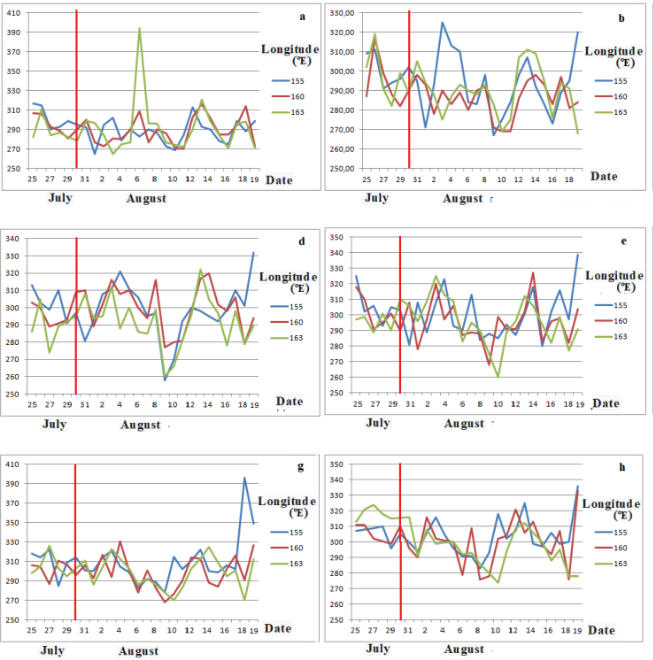The Changes in Distribution of Total Ozone over the Kamchatka Region and Hazardous Endogenous Geological Phenomena, That Occurred Here in 2016-2025
Main Article Content
Article Details
References
[1] Kholoptsev, A. V., Nikiforova, M. P., & Bolshikh, A. V. (2014). The world ocean and the ozonosphere. LAP Lambert Academic Publishing.
[2] Ali, S. M., Dash, N. K., Pradhan, A., et al. (2012). Effects of stratospheric ozone depletion on the environment and agriculture. International Journal of Advancements in Research & Technology, 1(4), 31–36. https://doi.org/10.7753/IJART0104.1005.
[3] Zepp, R. G., Callaghan, T. V., & Erickson, D. J. (2003). Interactive effects of ozone depletion and climate change on biogeochemical cycles. Photochemical & Photobiological Sciences, 2, 51–61. https://doi.org/10.1039/B211445H.
[4] United Nations Environment Programme (UNEP). (2010). Environmental effects of ozone depletion and its interactions with climate change: 2010 assessment. Nairobi: Author.
[5] McMichael, A. J., Lucas, R., Ponsonby, A.-L., & Edwards, S. J. (2010). Stratospheric ozone depletion, ultraviolet radiation and health. In Climate change and human health (pp. 159–180).
[6] Muller, R. (2012). Stratospheric ozone depletion and climate change. RSC Publishing. https://doi.org/10.1039/9781849734155.
[7] Syvorotkin, V. L. (2016). On the nature of natural fires. Almanac Space and Time, 11(1), 22–44.
[8] Khrgian, A. Kh. (1973). Physics of atmospheric ozone [in Russian]. Gidrometeoizdat.
[9] Dessler, A. (2000). The chemistry and physics of stratospheric ozone. Academic Press. https://doi.org/10.1016/B978-012219245-8.X5000-6.
[10] Mohanakumar, K. (2011). Interaction of the stratosphere and troposphere (R. Yu. Lukyanova, Trans.) [in Russian]. Fizmatlit.
[11] Syvorotkin, V. L. (2024). Degassing concept of global catastrophes. Biosphere Compatibility: Man, Region, Technology, 4, 2–11.
[12] Syvorotkin, V. L. (2019). Degassing concept of global catastrophes: Basic provisions, new results. Voprosy Geografii [Questions of Geography], 149, 35–51.
[13] Syvorotkin, V. L. (2022). Deep degassing of the Earth and volcanoes - where do terrible eruptions come from? IA Regnum, 1.05, 32–43.
[14] Syvorotkin, V. L. (2017). Volcanic eruptions. Space and Time, 1(27), 196–213.
[15] Ozerov, A. Yu. (2019). Klyuchevskoy volcano: Substance, dynamics, model [in Russian]. GEOS.
[16] Seynova, I. B., Chernomorets, S. S., Tutubalina, O. V., Barinov, A. Yu., & Sokolov, I. A. (2010). Conditions of mudflow formation in areas of active volcanism (using Klyuchevskoy and Shiveluch volcanoes, Kamchatka as an example). Part 1. Earth's Cryosphere, 14(2), 29–45. https://doi.org/10.1134/S1029334510020041.
[17] Syvorotkin, V. L. (2011). Earthquakes. Space and Time, 2(4), 124–137.
[18] Gushchin, G. P. (1999). Observations of total ozone at the network of stations in Russia and the CIS. Meteorology and Hydrology, 6, 37–42.
[19] Newman, P. A. (2003). Stratospheric ozone: An electronic textbook. Studying Earth's environment from space. NASA.
[20] Hoffman, M. J. (2005). Ozone depletion and climate change. State University Press.
[21] National Oceanic and Atmospheric Administration (NOAA). Time series of TO based on information obtained by the OMI instrument. Retrieved from https://www.esrl.noaa.gov/gmd/grad/neubrew/SatO3DataTimeSeries.jsp
[22] Landau, L. D., & Lifshits, E. M. (1986). Hydrodynamics [in Russian]. Nauka.
[23] Obukhov, A. M. (1988). Turbulence and dynamics of the atmosphere [in Russian]. Gidrometeoizdat. ISBN 5-286-00059-2.

This work is licensed under a Creative Commons Attribution 4.0 International License.

